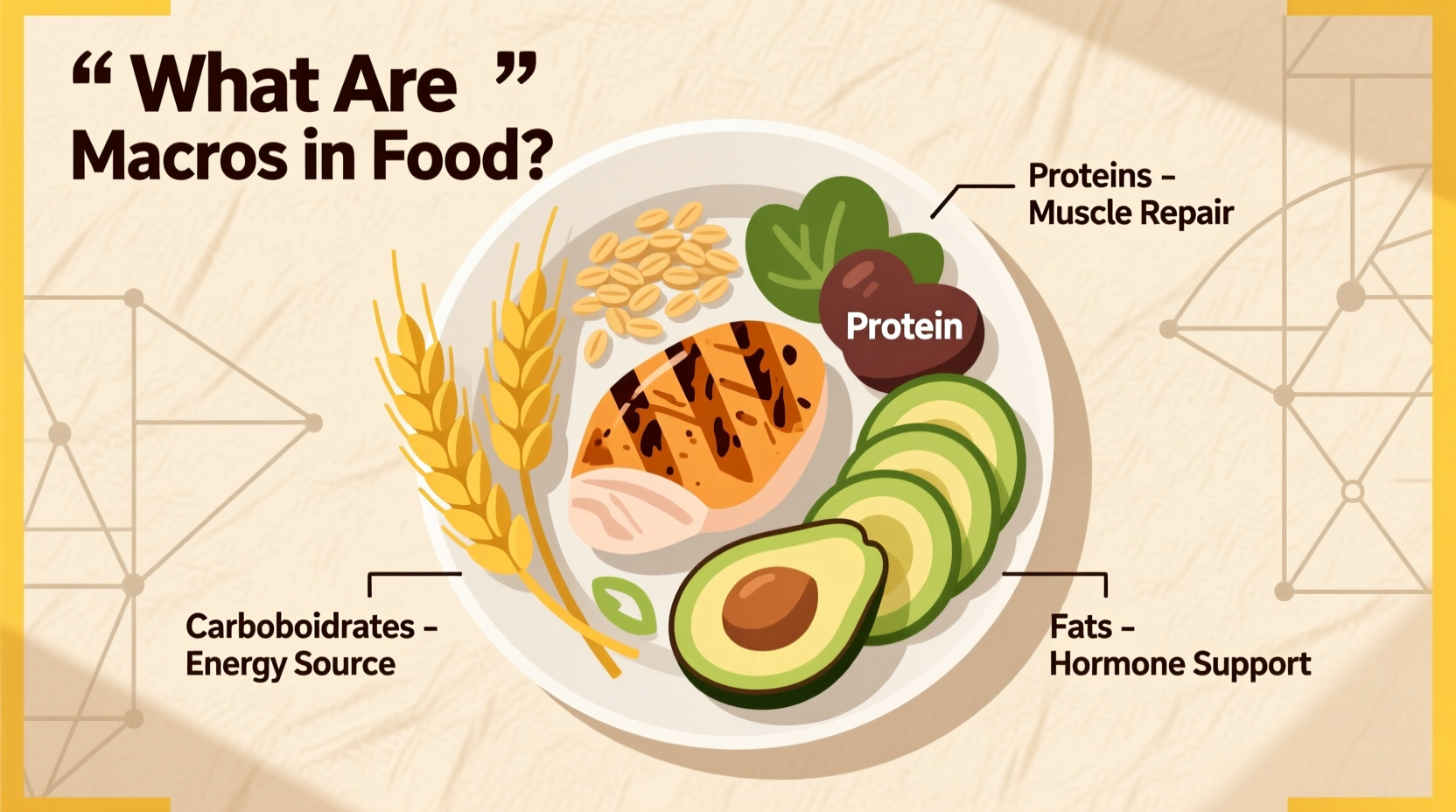Ever wondered what fitness enthusiasts mean when they talk about "hitting their macros" or why nutrition labels highlight certain values? The answer lies in understanding macronutrients—the fundamental building blocks of your diet that power your body and influence your health. Unlike micronutrients (vitamins and minerals needed in smaller amounts), macros provide the substantial energy and structural components your body requires daily.
Your Complete Guide to Food Macros
What Exactly Are Macros in Food?
Macronutrients represent the three major nutrient categories that supply your body with energy and serve critical physiological functions. Each gram of carbohydrate and protein provides 4 calories, while fat delivers 9 calories per gram—the most energy-dense macronutrient. Unlike popular misconceptions, no single macro is "bad"; your body requires all three in appropriate proportions for optimal functioning.
| Macronutrient | Calories per Gram | Primary Functions | Dietary Sources |
|---|---|---|---|
| Carbohydrates | 4 | Primary energy source, brain fuel, fiber for digestion | Fruits, vegetables, whole grains, legumes |
| Proteins | 4 | Muscle repair, enzyme production, immune function | Lean meats, fish, eggs, dairy, legumes, nuts |
| Fats | 9 | Hormone production, vitamin absorption, cell structure | Avocados, olive oil, nuts, seeds, fatty fish |
Why Tracking Macros Matters for Your Health
Understanding your macronutrient intake goes beyond simple calorie counting. Research from the USDA Dietary Guidelines shows that balanced macro distribution supports sustainable weight management, improves athletic performance, and reduces risk of chronic diseases. The National Institutes of Health emphasizes that proper macro balance maintains metabolic health—carbohydrates fuel immediate energy needs, proteins support tissue repair, and fats enable absorption of fat-soluble vitamins.
"Many people focus exclusively on calories while ignoring nutrient composition," explains Antonio Rodriguez, culinary science expert. "The quality of your macros matters more than just the quantity. Whole food sources provide additional micronutrients and fiber that processed alternatives lack."

How to Calculate Your Personal Macro Needs
Your ideal macro ratio depends on several factors including age, gender, activity level, and health goals. The Acceptable Macronutrient Distribution Ranges (AMDR) established by the National Agricultural Library recommend:
- Carbohydrates: 45-65% of daily calories
- Protein: 10-35% of daily calories
- Fats: 20-35% of daily calories
For example, on a 2,000-calorie diet:
- Carbs: 225-325 grams
- Protein: 50-175 grams
- Fats: 44-78 grams
Common Macro Misconceptions Debunked
Despite growing popularity, several myths persist about macronutrients. The Academy of Nutrition and Dietetics clarifies that:
- Fats aren't inherently fattening: Healthy fats support hormone balance and satiety
- Carbs aren't the enemy: Whole food carbohydrates provide essential fiber and nutrients
- Protein needs aren't universally high: Most Americans already exceed protein requirements
When Macro Tracking Becomes Counterproductive
While macro awareness benefits many, the National Institute of Mental Health cautions that obsessive tracking can develop into orthorexia or disordered eating patterns. Context matters—macro counting proves most valuable for specific athletic goals or medical conditions, but may create unnecessary stress for casual eaters. As registered dietitians note, intuitive eating focusing on whole foods often delivers better long-term results than rigid macro calculations for general wellness.
Practical Tips for Balanced Macro Intake
Implement these science-backed strategies without complicated calculations:
- Fill half your plate with colorful vegetables for balanced carbs and fiber
- Include palm-sized protein portions at each meal
- Add healthy fats through avocado slices, olive oil, or small handfuls of nuts
- Choose whole grains over refined carbohydrates whenever possible
- Listen to hunger and fullness cues rather than strict macro targets
Remember that individual responses to macronutrients vary significantly based on genetics, metabolism, and lifestyle factors. What works for one person might not suit another—personalization beats rigid formulas. Consulting a registered dietitian provides the most tailored approach to optimizing your macro intake based on your unique health profile and goals.











 浙公网安备
33010002000092号
浙公网安备
33010002000092号 浙B2-20120091-4
浙B2-20120091-4